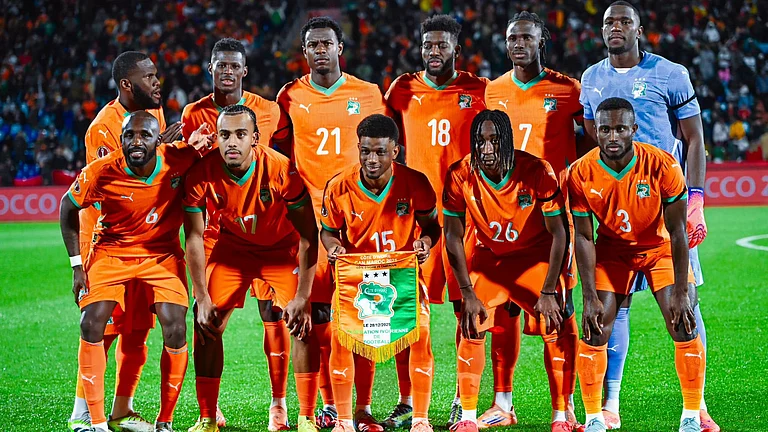Globally renowned cardiologist M.S. Valiathan, a former president of the Indian National Science Academy, says rampant corruption in the cardiac stent industry stems not just from pure profiteering by multinationals, but a lack of proper rules governing the medical devices market. In an interview with Arushi Bedi, the 82-year-old icon talks about the need for a national body to control the overuse and misuse of devices like stents.
What is the biggest problem the cardiac stent market faces?
India has no statutory mechanism to govern the way medical devices are produced and marketed in the country. The problem is not limited to the stents industry, but covers medical devices in general, such as other implants and disposables. All we have are a draft legislation proposed by the department of science and technology, which envisages an Indian medical devices regulatory authority with a technocrat heading it, and another draft prepared by the health ministry through the DCGI (Drug Control General of India) as the head. When two competing drafts appeared, the government could not make a decision—and opted for an ad hoc solution by setting up a committee under the DCGI through a notification. But this does not have the force of law.
Neither do we have a national test facility to evaluate stents or other devices made in India or imported. We thus have no way to determine if a device being marketed complies with Indian or ISO standards. The authorities have attempted to solve this by often stipulating in their tenders that devices must meet the standards to US Federal Drug Administration standards for marketing in India. We may be the only country that proclaims that devices to be marketed within its territory must conform to the standards of a foreign agency.
In the absence of our own testing and certification set-up, there is no way to know whether the devices being approved for marketing in India comply with Indian or ISO standards. Imported devices need not necessarily comply with ISO standards. The FDA approves many devices made in the US for export, but they are explicitly forbidden for use in that country.
Are patients aware of this?
I don’t think the majority of our patients or their relatives are aware of these details. They largely go by the guidance of doctors, in whom they have great trust. Very few take a second opinion or look at the internet for up-to-date information.
The MNC-dominated industry is characterised by huge mark-ups and allegations of bribery. How ingrained is this system?
In an unregulated market, the profit motive would reign supreme. You cannot control “runaway profiteering”. If you stipulate that devices should have the approval of a foreign agency, why should Indian entrepreneurs invest in producing them and go after a foreign agency—not necessarily friendly—for approval? This kills Indian entrepreneurship. An Indian medical device regulatory authority set up by legislation and supported by well-equipped test laboratories is indispensable for incentivising entrepreneurs and protecting our patients. In the absence of a strong law and test laboratories for certification, it is no wonder a fast-expanding market for medical devices is mired in corruption.
Many doctors are huge beneficiaries of bribes. How do we ensure that doctors are made more responsible?
There are plenty of reports of doctors being a party to the “profiteering industry” in relation to medical devices at the cost of patients. How to make them “responsible” or virtuous is a difficult question. Even acharyas in the past have failed to make people virtuous. When black money is king (before demonetisation) and corruption rampant in all professions, how does one immunise the medical profession alone from this disease? Sadly, character-building has no place in our educational system, and that includes medical education. The Medical Council of India has issued a set of ethical guidelines for the practice of medicine, but they have hardly had any effect on the profession.
How do we ensure then that checks and balances are in place?
I would say three things. First, ethical practice should be ingrained throughout a doctor’s training. Medical teachers should become role models for them, which means the career advancement of teachers must be tied to their performance on ethical parameters too, not only teaching and research.
Second, there should be an effective legislation for medical devices in place, which every country has, including Sri Lanka. We should stop turf wars between the ministries/departments of S&T, health and pharma and get on with the job of legislation as quickly as possible.
Thirdly, there should be a national body on the lines of Britain’s NICE (National Institute for Health and Care Excellence) to evolve and issue guidelines on optimal use of high-tech devices in diagnosis and treatment. These guidelines would cover the use of stents, heart valves, joint prostheses, scans, etc, and would discourage the overuse and misuse of high technology in medical practice. These guidelines must be developed by hard, serious work by medical experts on the basis of data from clinical trials done in India whenever possible—if necessary, one could use even data from trials done abroad. The draft guidelines should be open to doctors, specialist associations, NGOs, media, healthcare administrators, insurance regulators, etc, for their inputs and should be suitably modified.
Once the national body issues the guidelines, insurance companies, CGHS, etc would reimburse a hospital bill only if these basic norms have been observed. Otherwise the patient and hospital would be obliged to bear the cost. This is how the NICE guidelines work successfully in Britain. A similar practice should work in India. There is, in fact, a National Board for Medical Technology Assessment working on this project under the department of health research. I was associated with it in the beginning. But its progress over four years is so slow that it may follow in the footsteps of the medical devices legislation, which is pending for 30 years.
Which is to say, there are no guidelines and no legislation...
In the medical devices industry, there’s nothing—that is, no law to be complied with in the production and marketing of medical devices. In contrast, the use of medical devices by doctors and hospitals should comply with a set of medical guidelines issued by a national body. Even guidelines cannot be compulsory—but there needs to be a mechanism by which any violation of guidelines by doctors or hospitals would debar them from reimbursement by the government or insurance firms. Only this would prevent the overuse and misuse of technology in medical practice and eliminate a lot of corruption.
And what could be the main features of a legislation on medical devices?
There are two draft legislations. There may be more. The main features of any good legislation are straightforward. Devices should be classified in harmony with the international practice as India may also want to export them in future; the devices should comply with the standards prescribed for component materials and also with the protocols of tests for function, durability etc. There may be other tests, too, specific to applications. Unless these criteria are met, the device should not receive permission for production and marketing.
Can you elaborate on test laboratories you have mentioned?
It’s obvious that one or two central laboratories cannot meet the national demand for testing medical devices, which will number in thousands and would incorporate varied technologies. Here, we should borrow the European model and empanel laboratories, in both the public and private sectors, that have the expertise and experience in testing devices based on electronic, mechanical, physical, biological and hybrid technologies. No laboratory will have facilities and expertise to do all these tests under one roof in India or abroad. The selected labs should be accredited, the authority should notify their address. An inventor must be able to approach the appropriate lab to test a device anywhere in India and get a test certificate. On the basis of that alone must permission be issued to produce and market the device. This was part of the medical device legislation proposed by the DST.
Is there a multinational lobby that prevents such legislation from being passed?
I don’t know, but it’s logical that vested interests who gain from the present legislative vacuum and lack of national guidelines would try to block them.
What’s the difference between government and private procurement practices?
It’s well known that bulk purchase of devices is a source of corruption in both public and private sectors. Hospitals and health services purchase devices at a large discount, which is not passed on. Patients are obliged to pay the standard price. Tamil Nadu is an exception: the bulk purchase is made by a state corporation, and the advantage is passed on to the patients. This needs to be emulated all over India.
Is it justified for multinationals to charge exorbitant prices in the name of research and development?
The cost of materials and skilled labour alone form a smaller part of the cost of a device such as a stent or heart valve. The high price we pay is indeed payment for the R&D—typically done over several years by the company and involving scientists and engineers. However, when the device has been in the market for 10-15 years and plenty of profit has been made, this justification would become weak.
The pharma department has brought stents under the National List of Essential Medicines. Is it a good decision?
Well, it’s necessary to control the misuse and overuse of any device, including stents. But it’s wrong to include stents under “essential drugs”. These arbitrary decisions make regulatory bodies of other countries laugh at us. Such decisions are made because we have failed to enact a proper devices legislation.
Why aren’t more Indian companies getting into the field?
First, there is insufficient awareness of the opportunities in the medical devices industry that constitutes less than 1 per cent of India’s manufacturing sector. It’s not sufficiently known that India imported medical devices worth Rs 21,000 crore in 2014…and the market is growing at 10 per cent a year. Second, the lack of a law on medical devices inhibits entrepreneurs from developing and marketing new products lest they face legal problems and court cases. Third, it’s much more profitable and easy to import devices and sell them at a big profit.


























